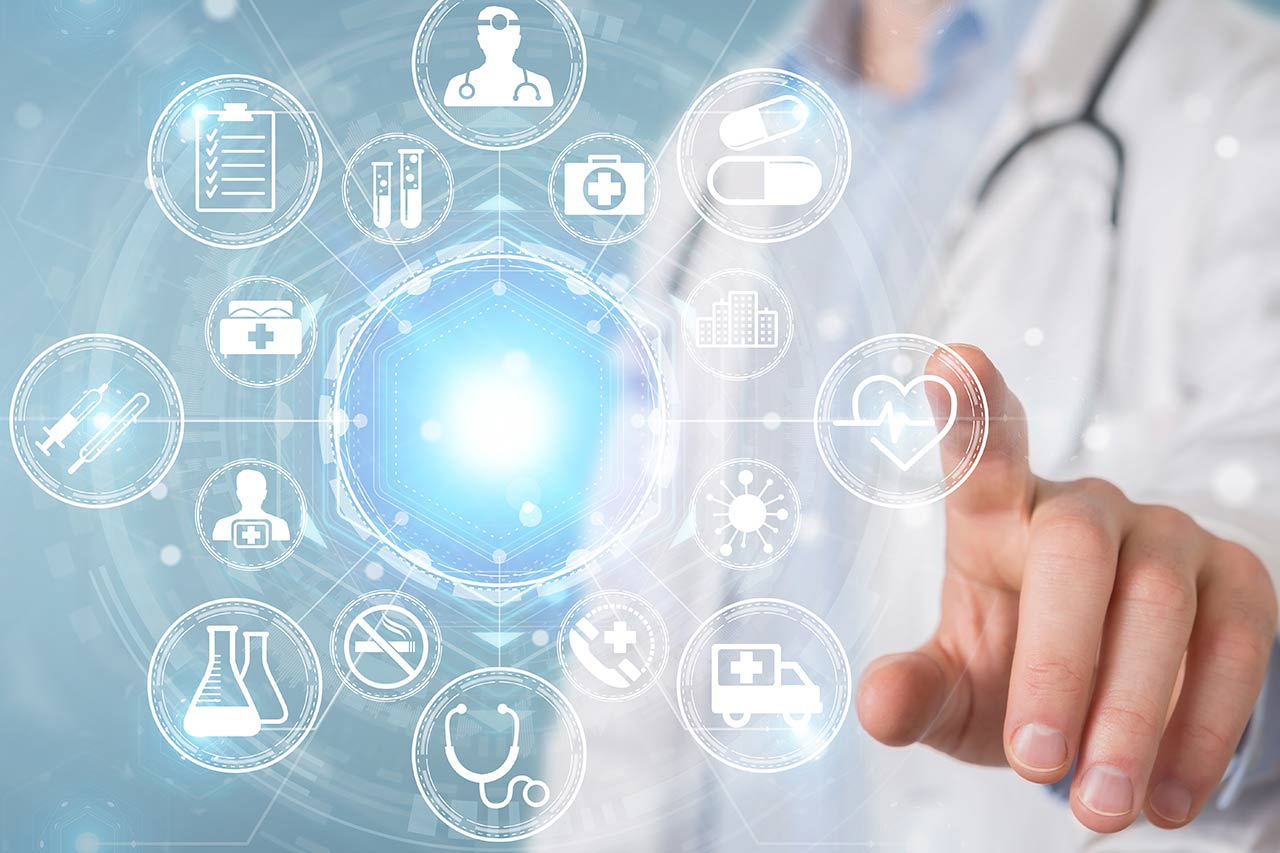3 Trending Technologies for Clinical Diagnostics: what can we anticipate?

Reaching the right diagnosis is a crucial part of patient care, as it allows patients to receive the appropriate treatment in a timely manner. To minimize the risk of a misdiagnosis, technologies such as AI, liquid biopsies, and wearables are being introduced and improved continuously for applications in diagnostics. These technologies are currently of high interest for their performances in efficiently aiding a physician’s diagnostics and workflow, providing alternatives for less invasive sample collection methods and offering comprehensive data overtime. In this article, Alcimed digs into three trendy technologies applied for diagnostic purposes.
1. AI for more accurate diagnoses
Artificial Intelligence (AI) has been shown to be on par in diagnostic accuracy to human experts, with 87% accuracy for AI and 86% for human experts [1,2]. In diagnostics, AI has been used for the interpretation of medical images and is typically incorporated as a decision support tool to aid medical experts in speeding up workflow. In 2018, IDx-DR, a diagnostic software for diabetic retinopathy, became the first AI system able to provide diagnosis fully autonomously without the supervision of a clinician to be approved by the FDA. IDx-DR can be used in a primary care practitioner’s office, which could increase access to diabetic retinopathy screenings for those who do not visit an eye doctor regularly.
Despite the benefits mentioned, concerns regarding AI systems circulate. For instance, there is public uncertainty with the thought of “a machine” making diagnosis. A study from the Journal of Consumer Research reported that when offered a free medical assessment, 40% of the group signed up for assessment done by a human doctor, but only 26% do the same for assessment with AI [3]. It was found that people are less likely to accept diagnosis done with AI healthcare services as they are concerned that AI might not deliver personalized diagnoses.
2. Liquid biopsies for cancer early screening and diagnosis
Liquid biopsies are first commercially available in 2000 for non-invasive and early cancer diagnosis, more specifically for the detection of circulating tumor cells (CTCs), which are cells that have escaped the primary tumor into the blood stream. Coupled with Next Generation Sequencing (NGS), a methodology that allows simultaneous analysis of multiple genes, liquid biopsies can capture and analyze circulating tumor DNA (ctDNA), providing information on the cancer profile. This would offer more comprehensive information than traditional tissue biopsy, as due to cancer heterogeneity, a single molecular profile of the tissue sample is very unlikely to represent the entire tumor.
However, there are complications with using ctDNA for cancer diagnosis. For instance, the concentration of ctDNA is quite low in asymptomatic patients, so a higher volume of blood sample is necessary to reach a sensitivity of 95% [4]. In addition, there is still much to be done to increase adoption of liquid biopsies in clinical care: doctors are more experienced with tissue biopsies, and a switch to liquid biopsies could face reluctance. The integration is advancing though, with the European Liquid Biopsy Society (ELBS) established at the start of 2020 encouraging partnerships and research, developing guidelines and providing trainings with liquid biopsy to promote the introduction of liquid biopsies into clinical trials and practice.
3. Wearables are extending into the diagnostic field
Wearable technologies are widely used today to track fitness and health attributes like heart rate and sleep scores. These devices are advantageous as they are non-invasive and non-obtrusive (usually) and allow patient monitoring over a long period of time. While most current wearables are designed for continuous monitoring, more effort is made towards applying wearable technologies for diagnostic purposes. An interesting project in the pipeline is a CTC detecting wearable device from the University of Michigan. This wrist-worn device is a prototype able to analyze a patient’s blood for several hours, capturing 3.5 times more cancerous cells in the blood than a traditional blood drawing method. For this device, blood from the patient’s peripheral vein is directed into the device and back into their blood stream. This means that blood can be drawn and analyzed over time while minimizing blood loss. This makes the device highly interesting, as common blood drawing methods are typically limited by the insufficient amount of CTCs present in the blood. The device is still undergoing animal trials, and clinical testing with humans are on the horizon.
Wearable technologies made healthcare monitoring accessible to the general public, but they also face several challenges primarily in data security and privacy when patient’s data is continuously collected and analyzed. Concerns arise in this topic about where and how the users’ personal data is stored, as well as in whether the stored data could be sold for commercial purposes or influence their health, travel, and life insurances.
AI, liquid biopsies, and wearable technologies are making advancements in the diagnostic field, however, there are still several challenges in their adoption. AI raises questions in the flexibility of diagnostics, and as AI tools and wearable technologies store user information, a common concern these technologies share is data privacy and security. On the other hand, liquid biopsies face adoption issues by healthcare providers, as they are more experienced with the traditional tissue biopsy.
As technologies and their integration advance, will we see replacements of AI diagnostic tools in place of a human expert conducting diagnosis, or liquid biopsies in place of tissue biopsies? At Alcimed, we are convinced that solutions to overcome those barriers will be found, and the full potential for progress of these technologies revealed. We will keep you posted!
About the author
Tara, Consultant in Alcimed’s Healthcare team in Asia-Pacific
Delphine, Head of Healthcare activities in Alcimed’s team in Asia-Pacific
[1] https://www.theguardian.com/technology/2019/sep/24/ai-equal-with-human-experts-in-medical-diagnosis-study-finds
[2] https://www.thelancet.com/journals/landig/article/PIIS2589-7500(19)30123-2/fulltext
[3] https://hbr.org/2019/10/ai-can-outperform-doctors-so-why-dont-patients-trust-it
[4] https://humgenomics.biomedcentral.com/articles/10.1186/s40246-019-0220-8
Do you have an exploration project?
Our explorers are ready to discuss it with you